My
List |
Addition Date
|
Target
|
Mission
|
Instrument
|
Size
|

|
1998-12-05 |
Jupiter
|
Voyager
|
VG ISS - Narrow Angle
|
916x901x3 |
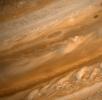
|
-
PIA01369:
-
Jupiter from Voyager 2
Full Resolution:
TIFF
(1.809 MB)
JPEG
(68.65 kB)
|

|
1998-12-05 |
Jupiter
|
Voyager
|
VG ISS - Narrow Angle
|
800x920x3 |

|
-
PIA01370:
-
Jupiter's Great Red Spot
Full Resolution:
TIFF
(1.251 MB)
JPEG
(49.61 kB)
|

|
1998-12-05 |
Io
|
Voyager
|
VG ISS - Narrow Angle
|
600x600x3 |
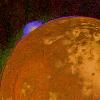
|
-
PIA01368:
-
Jupiter's Moon Io
Full Resolution:
TIFF
(736.2 kB)
JPEG
(138.3 kB)
|

|
1998-11-24 |
Europa
|
Galileo
|
Solid-State Imaging
|
1950x850x3 |
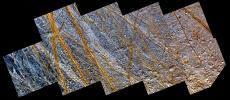
|
-
PIA01641:
-
Double Ridges, Dark Spots, and Smooth Icy Plains on Europa
Full Resolution:
TIFF
(4.186 MB)
JPEG
(582.2 kB)
|

|
1998-11-04 |
Jupiter
|
Voyager
|
VG ISS - Narrow Angle
|
400x400x3 |
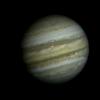
|
-
PIA01371:
-
Voyager Picture of Jupiter
Full Resolution:
TIFF
(152.4 kB)
JPEG
(8.968 kB)
|

|
1998-11-02 |
Io
|
Voyager
|
|
1573x1738x3 |

|
-
PIA01485:
-
South Polar Region of Io
Full Resolution:
TIFF
(8.229 MB)
JPEG
(257.5 kB)
|

|
1998-10-30 |
J Rings
|
Voyager
|
|
1715x1706x1 |
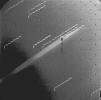
|
-
PIA01484:
-
First Evidence of Jupiter Ring
Full Resolution:
TIFF
(1.205 MB)
JPEG
(187.5 kB)
|

|
1998-10-30 |
Jupiter
|
Voyager
|
|
2081x1654x3 |
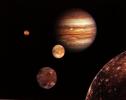
|
-
PIA01481:
-
Jupiter System Montage
Full Resolution:
TIFF
(4.652 MB)
JPEG
(148.9 kB)
|

|
1998-10-21 |
Callisto
|
Galileo
|
|
2220x1700x3 |
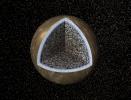
|
-
PIA01478:
-
Callisto Cutaway with Ocean (Artist's Concept)
Full Resolution:
TIFF
(5.246 MB)
JPEG
(490.9 kB)
|

|
1998-10-14 |
Jupiter
|
Galileo
Hubble Space Telescope
|
|
850x950x3 |

|
-
PIA01477:
-
Jupiter's White Ovals
Full Resolution:
TIFF
(648.3 kB)
JPEG
(32.09 kB)
|

|
1998-10-13 |
Europa
|
Galileo
|
Solid-State Imaging
|
747x800x1 |

|
-
PIA01640:
-
Mitten shaped region of Chaotic Terrain on Europa
Full Resolution:
TIFF
(609.5 kB)
JPEG
(177.1 kB)
|

|
1998-10-13 |
Jupiter
|
Galileo
|
Solid-State Imaging
|
592x537x3 |
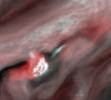
|
-
PIA01639:
-
Water Cloud Thunderstorm Northwest of Great Red Spot
Full Resolution:
TIFF
(621.9 kB)
JPEG
(19.42 kB)
|

|
1998-10-13 |
Jupiter
|
Galileo
|
Solid-State Imaging
|
1152x855x1 |
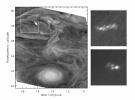
|
-
PIA01638:
-
Jovian Lightning and the Daytime Storm
Full Resolution:
TIFF
(188.1 kB)
JPEG
(89.44 kB)
|

|
1998-10-13 |
Io
|
Galileo
|
Solid-State Imaging
|
689x350x3 |
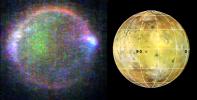
|
-
PIA01637:
-
Io's Aurorae
Full Resolution:
TIFF
(638 kB)
JPEG
(46.23 kB)
|

|
1998-10-13 |
Jupiter
|
Galileo
|
Solid-State Imaging
|
880x620x3 |
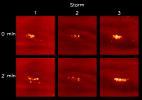
|
-
PIA01636:
-
Changing Lightning Storms on Jupiter
Full Resolution:
TIFF
(84.96 kB)
JPEG
(37.34 kB)
|

|
1998-10-13 |
Io
|
Galileo
|
Solid-State Imaging
|
1054x352x3 |
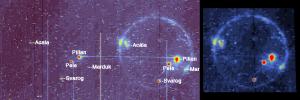
|
-
PIA01635:
-
Io in Eclipse reveals High Temperature Hot Spots
Full Resolution:
TIFF
(323.3 kB)
JPEG
(59.78 kB)
|

|
1998-10-13 |
Callisto
|
Galileo
|
Solid-State Imaging
|
6490x13101x1 |

|
-
PIA01634:
-
Asgard Multi-Ring Structure on Callisto
Full Resolution:
TIFF
(51.5 MB)
JPEG
(5.352 MB)
|

|
1998-10-13 |
Europa
|
Galileo
|
Solid-State Imaging
|
2686x2494x1 |
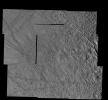
|
-
PIA01633:
-
The Tyre multi-ring Structure on Europa
Full Resolution:
TIFF
(6.208 MB)
JPEG
(1.347 MB)
|

|
1998-10-13 |
Callisto
|
Galileo
|
Solid-State Imaging
|
720x703x1 |
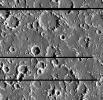
|
-
PIA01632:
-
Callisto's Varied Crater Landscape
Full Resolution:
TIFF
(395.8 kB)
JPEG
(126 kB)
|

|
1998-10-13 |
Callisto
|
Galileo
|
Solid-State Imaging
|
800x799x1 |
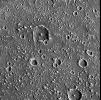
|
-
PIA01631:
-
So few Small Craters on Callisto
Full Resolution:
TIFF
(528.1 kB)
JPEG
(188.6 kB)
|

|
1998-10-13 |
Callisto
|
Galileo
|
Solid-State Imaging
|
1422x1252x1 |
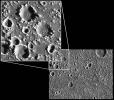
|
-
PIA01630:
-
Callisto: Pits or Craters?
Full Resolution:
TIFF
(1.007 MB)
JPEG
(237.7 kB)
|

|
1998-10-13 |
Callisto
|
Galileo
|
|
800x799x1 |
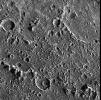
|
-
PIA01629:
-
Textured Terrain in Callisto's Asgard Basin
Full Resolution:
TIFF
(600.1 kB)
JPEG
(189.1 kB)
|

|
1998-09-21 |
Jupiter
|
Voyager
|
ISS - Narrow Angle
|
600x992x3 |

|
-
PIA01324:
-
Jupiter
Full Resolution:
TIFF
(299.6 kB)
JPEG
(21.53 kB)
|

|
1998-09-15 |
J Rings
|
Galileo
|
Solid-State Imaging
|
1800x2700x3 |

|
-
PIA01628:
-
Jupiter's Main and Gossamer Ring Structures
Full Resolution:
TIFF
(1.874 MB)
JPEG
(141.2 kB)
|

|
1998-09-15 |
J Rings
|
Galileo
|
Solid-State Imaging
|
2560x1920x3 |
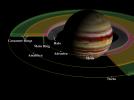
|
-
PIA01627:
-
Jupiter's Inner Satellites and Ring Components
Full Resolution:
TIFF
(2.915 MB)
JPEG
(196.2 kB)
|

|
1998-09-15 |
Io
|
Galileo
|
Solid-State Imaging
|
471x404x3 |
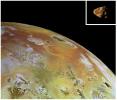
|
-
PIA01626:
-
Comparison of Amalthea to Io
Full Resolution:
TIFF
(159.3 kB)
JPEG
(30.32 kB)
|

|
1998-09-15 |
Amalthea
|
Galileo
|
Solid-State Imaging
|
1539x802x1 |
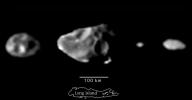
|
-
PIA01625:
-
Scale Comparison of the Inner Small Satellites of Jupiter
Full Resolution:
TIFF
(99.39 kB)
JPEG
(38.67 kB)
|

|
1998-09-15 |
Amalthea
|
Galileo
|
Solid-State Imaging
|
1539x1066x1 |
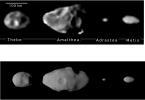
|
-
PIA01624:
-
Shapes of the Small Inner Satellites of Jupiter
Full Resolution:
TIFF
(163.2 kB)
JPEG
(67.18 kB)
|

|
1998-09-15 |
J Rings
|
Galileo
|
Solid-State Imaging
|
2016x1529x3 |
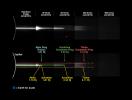
|
-
PIA01623:
-
Jupiter's Gossamer Ring Structure
Full Resolution:
TIFF
(942.3 kB)
JPEG
(176.7 kB)
|

|
1998-09-15 |
J Rings
|
Galileo
|
Solid-State Imaging
|
1078x636x1 |
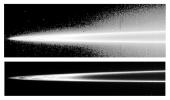
|
-
PIA01622:
-
Jupiter's Main Ring and Halo
Full Resolution:
TIFF
(299.6 kB)
JPEG
(62.45 kB)
|

|
1998-09-15 |
J Rings
|
Galileo
|
Solid-State Imaging
|
2663x1418x1 |
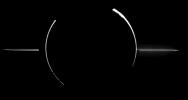
|
-
PIA01621:
-
Jupiter's Ring System
Full Resolution:
TIFF
(145.1 kB)
JPEG
(62.26 kB)
|

|
1998-08-03 |
Ganymede
|
Galileo
|
Solid-State Imaging
|
800x800x3 |
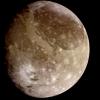
|
-
PIA00716:
-
Ganymede Color Global
Full Resolution:
TIFF
(1.121 MB)
JPEG
(46.44 kB)
|

|
1998-07-15 |
Ganymede
|
Galileo
|
Solid-State Imaging
|
790x1413x1 |

|
-
PIA01606:
-
Completing a Global Map of Ganymede
Full Resolution:
TIFF
(763.1 kB)
JPEG
(129.1 kB)
|

|
1998-07-15 |
Ganymede
|
Galileo
|
Solid-State Imaging
|
900x600x1 |
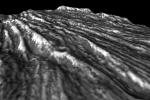
|
-
PIA01620:
-
Perspective View of Bright Ridges in Uruk Sulcus
Full Resolution:
TIFF
(401.7 kB)
JPEG
(63.04 kB)
|

|
1998-07-15 |
Ganymede
|
Galileo
|
Solid-State Imaging
|
782x784x1 |
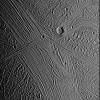
|
-
PIA01619:
-
Morning in Tiamat Sulcus
Full Resolution:
TIFF
(611.1 kB)
JPEG
(205.8 kB)
|

|
1998-07-15 |
Ganymede
|
Galileo
|
Solid-State Imaging
|
706x551x1 |
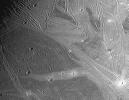
|
-
PIA01618:
-
Regional View of Ganymede
Full Resolution:
TIFF
(379.8 kB)
JPEG
(91.26 kB)
|

|
1998-07-15 |
Ganymede
|
Galileo
|
Solid-State Imaging
|
797x798x1 |
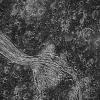
|
-
PIA01617:
-
Marius Regio, Ganymede
Full Resolution:
TIFF
(559.4 kB)
JPEG
(199.5 kB)
|

|
1998-07-15 |
Ganymede
|
Galileo
|
Solid-State Imaging
|
506x360x1 |
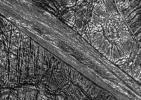
|
-
PIA01616:
-
Highly Fractured Dark and Bright Terrain
Full Resolution:
TIFF
(172.8 kB)
JPEG
(56.59 kB)
|

|
1998-07-15 |
Ganymede
|
Galileo
|
Solid-State Imaging
|
949x559x1 |
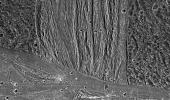
|
-
PIA01615:
-
Swaths of Grooved Terrain on Ganymede
Full Resolution:
TIFF
(499.9 kB)
JPEG
(160.6 kB)
|

|
1998-07-15 |
Ganymede
|
Galileo
|
Solid-State Imaging
|
531x361x1 |
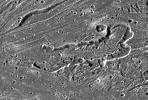
|
-
PIA01614:
-
"Calderas" on Ganymede?
Full Resolution:
TIFF
(204.8 kB)
JPEG
(55.26 kB)
|

|
1998-07-15 |
Ganymede
|
Galileo
|
Solid-State Imaging
|
800x798x1 |
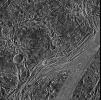
|
-
PIA01613:
-
Fractures in Nicholson Regio
Full Resolution:
TIFF
(626.8 kB)
JPEG
(202.1 kB)
|

|
1998-07-15 |
Ganymede
|
Galileo
|
Solid-State Imaging
|
615x519x1 |
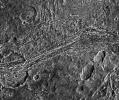
|
-
PIA01612:
-
A Tumultuous Past for Ganymede's Dark Terrain
Full Resolution:
TIFF
(293 kB)
JPEG
(99.24 kB)
|

|
1998-07-15 |
Ganymede
|
Galileo
|
Solid-State Imaging
|
692x480x3 |

|
-
PIA01611:
-
Kittu Dark Ray Crater
Full Resolution:
TIFF
(664.6 kB)
JPEG
(97.1 kB)
|

|
1998-07-15 |
Ganymede
|
Galileo
|
Solid-State Imaging
|
392x398x1 |

|
-
PIA01610:
-
Anatomy of a Torn Comet
Full Resolution:
TIFF
(168.6 kB)
JPEG
(54 kB)
|

|
1998-07-15 |
Ganymede
|
Galileo
|
Solid-State Imaging
|
813x753x1 |
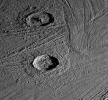
|
-
PIA01609:
-
Fresh Impact Craters on Ganymede
Full Resolution:
TIFF
(576.4 kB)
JPEG
(196.4 kB)
|

|
1998-07-15 |
Ganymede
|
Galileo
|
Solid-State Imaging
|
707x1049x1 |

|
-
PIA01608:
-
High Latitude "Bright" and "Dark" Terrains on Ganymede
Full Resolution:
TIFF
(534 kB)
JPEG
(95.77 kB)
|

|
1998-07-15 |
Ganymede
|
Galileo
|
Solid-State Imaging
|
392x398x1 |

|
-
PIA01607:
-
Dark-floored Impact Craters on Ganymede
Full Resolution:
TIFF
(189.6 kB)
JPEG
(60.53 kB)
|

|
1998-07-02 |
Io
|
Galileo
|
|
800x800x1 |
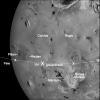
|
-
PIA01605:
-
Io imaging during Galileo's 24th orbit
Full Resolution:
TIFF
(512 kB)
JPEG
(91.06 kB)
|

|
1998-07-02 |
Io
|
Galileo
|
Solid-State Imaging
|
581x900x3 |

|
-
PIA01604:
-
Close-up color view of Io
Full Resolution:
TIFF
(1.769 MB)
JPEG
(78.57 kB)
|

|
1998-06-17 |
Europa
|
Galileo
|
Near Infrared Mapping Spectrometer
|
820x470x1 |
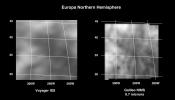
|
-
PIA00840:
-
Infrared Observations of Europa's Trailing Side
Full Resolution:
TIFF
(94.4 kB)
JPEG
(29.74 kB)
|

|
1998-06-10 |
Jupiter
|
Galileo
|
Solid-State Imaging
|
900x900x3 |
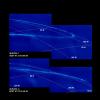
|
-
PIA01603:
-
Time Series of Jupiter's Aurora
Full Resolution:
TIFF
(820.7 kB)
JPEG
(73.32 kB)
|

|
1998-06-10 |
Jupiter
|
Galileo
|
Solid-State Imaging
|
900x950x3 |

|
-
PIA01602:
-
Time Series of Jupiter's Aurora
Full Resolution:
TIFF
(1.121 MB)
JPEG
(91.86 kB)
|

|
1998-06-10 |
Jupiter
|
Galileo
|
Solid-State Imaging
|
900x950x3 |

|
-
PIA01601:
-
Time Series of Jupiter's Aurora
Full Resolution:
TIFF
(976.6 kB)
JPEG
(83.63 kB)
|

|
1998-06-10 |
Jupiter
|
Galileo
|
Solid-State Imaging
|
900x900x3 |
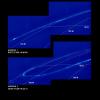
|
-
PIA01600:
-
Time Series of Jupiter's Aurora
Full Resolution:
TIFF
(773.5 kB)
JPEG
(61.78 kB)
|

|
1998-06-08 |
Io
|
Voyager
|
VG ISS - Narrow Angle
|
1150x1430x3 |

|
-
PIA00401:
-
Io: Cylindrical Projection
Full Resolution:
TIFF
(4.465 MB)
JPEG
(229.2 kB)
|

|
1998-06-04 |
Jupiter
|
Voyager
|
|
840x840x3 |
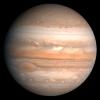
|
-
PIA00343:
-
Jupiter
Full Resolution:
TIFF
(1.194 MB)
JPEG
(42 kB)
|

|
1998-06-04 |
Ganymede
|
Voyager
|
VG ISS - Wide Angle
|
1024x520x3 |
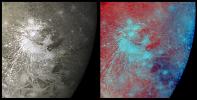
|
-
PIA00334:
-
Crater Rays on Ganymede
Full Resolution:
TIFF
(1.644 MB)
JPEG
(96.83 kB)
|

|
1998-06-04 |
Io
|
Voyager
|
|
718x800x3 |

|
-
PIA00328:
-
Io, Showing Volcanic Plains and Mountains
Full Resolution:
TIFF
(1.445 MB)
JPEG
(51.48 kB)
|

|
1998-06-04 |
Io
|
Voyager
|
Imaging Science Subsystem
|
2175x2810x3 |

|
-
PIA00327:
-
Io, the South Polar Region
Full Resolution:
TIFF
(8.014 MB)
JPEG
(297.8 kB)
|

|
1998-06-04 |
Europa
|
Voyager
|
VG Imaging Science Subsystem
|
3138x3138x3 |
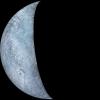
|
-
PIA00325:
-
Europa Crescent
Full Resolution:
TIFF
(6.635 MB)
JPEG
(669.9 kB)
|

|
1998-06-04 |
Io
|
Voyager
|
Imaging Science Subsystem
|
1100x1292x3 |

|
-
PIA00324:
-
Volcanic Plains of Io Near Galai Patera
Full Resolution:
TIFF
(2.732 MB)
JPEG
(150.1 kB)
|

|
1998-06-04 |
Io
|
Voyager
|
|
2625x1840x3 |
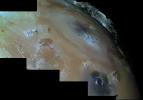
|
-
PIA00323:
-
Eruption of Pele
Full Resolution:
TIFF
(8.268 MB)
JPEG
(268 kB)
|

|
1998-06-04 |
Io
|
Voyager
|
|
1240x1229x3 |
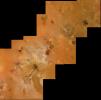
|
-
PIA00321:
-
Io, the Ra Patera, Mazda Catena, and Gibil Patera Area
Full Resolution:
TIFF
(2.485 MB)
JPEG
(92.7 kB)
|

|
1998-06-04 |
Io
|
Voyager
|
Imaging Science Subsystem
|
1520x1400x3 |
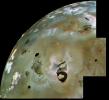
|
-
PIA00320:
-
Loki Patera
Full Resolution:
TIFF
(3.631 MB)
JPEG
(156.6 kB)
|

|
1998-06-04 |
Io
|
Voyager
|
|
2468x1051x3 |
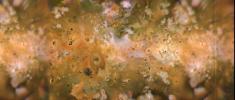
|
-
PIA00319:
-
Global Mercator Mosaic
Full Resolution:
TIFF
(8.191 MB)
JPEG
(209.7 kB)
|

|
1998-06-04 |
Io
|
Voyager
|
|
2572x1286x3 |
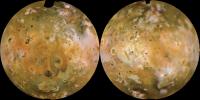
|
-
PIA00318:
-
Io Shown in Lambertian Equal Area Projection and in Approximately Natural Color
Full Resolution:
TIFF
(8.241 MB)
JPEG
(259.1 kB)
|

|
1998-05-21 |
Europa
|
Galileo
|
Solid-State Imaging
|
3500x2220x1 |
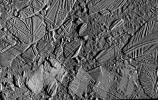
|
-
PIA01403:
-
A Closer Look at Chaos on Europa
Full Resolution:
TIFF
(7.139 MB)
JPEG
(1.036 MB)
|

|
1998-05-21 |
Europa
|
Galileo
|
Solid-State Imaging
|
4000x2024x1 |
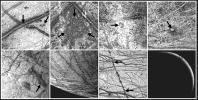
|
-
PIA01407:
-
Europa Imaging Highlights During GEM
Full Resolution:
TIFF
(6.84 MB)
JPEG
(791.3 kB)
|

|
1998-05-21 |
Europa
|
Galileo
|
Solid-State Imaging
|
856x407x3 |
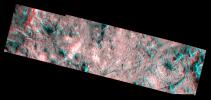
|
-
PIA01406:
-
Topography within Europa's Mannann'an Crater
Full Resolution:
TIFF
(405.7 kB)
JPEG
(51.08 kB)
|

|
1998-05-21 |
Europa
|
Galileo
|
Solid-State Imaging
|
814x560x1 |
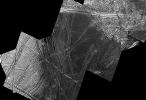
|
-
PIA01405:
-
A Dark Spot on Europa
Full Resolution:
TIFF
(353.3 kB)
JPEG
(116.1 kB)
|

|
1998-05-21 |
Europa
|
Galileo
|
Solid-State Imaging
|
800x400x1 |
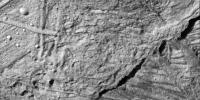
|
-
PIA01404:
-
Small Craters on Europa
Full Resolution:
TIFF
(305.6 kB)
JPEG
(70.33 kB)
|

|
1998-05-21 |
Europa
|
Galileo
|
Solid-State Imaging
|
1042x643x3 |
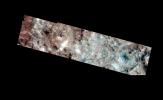
|
-
PIA01402:
-
Mannann'an Crater
Full Resolution:
TIFF
(647.6 kB)
JPEG
(51.43 kB)
|

|
1998-05-21 |
Europa
|
Galileo
|
Solid-State Imaging
|
2700x2200x1 |
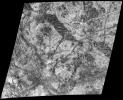
|
-
PIA01401:
-
Scrambled Ice
Full Resolution:
TIFF
(3.565 MB)
JPEG
(653.9 kB)
|

|
1998-05-08 |
Europa
|
Galileo
|
Solid-State Imaging
|
2605x3073x1 |

|
-
PIA01084:
-
Flow-like Features On Europa
Full Resolution:
TIFF
(4.78 MB)
JPEG
(471.9 kB)
|

|
1998-05-08 |
Europa
|
Galileo
|
Solid-State Imaging
|
2150x1950x1 |
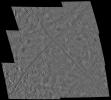
|
-
PIA01092:
-
Geologic Evidence of Internal Activity on Europa
Full Resolution:
TIFF
(3.502 MB)
JPEG
(689.3 kB)
|

|
1998-05-08 |
Io
|
Galileo
|
Solid-State Imaging
|
1927x619x3 |

|
-
PIA01400:
-
The Galilean Satellites
Full Resolution:
TIFF
(2.237 MB)
JPEG
(134.9 kB)
|

|
1998-05-08 |
Io
|
Galileo
|
Solid-State Imaging
|
1870x635x3 |
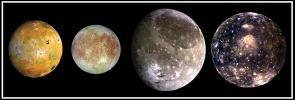
|
-
PIA01299:
-
The Galilean Satellites
Full Resolution:
TIFF
(2.132 MB)
JPEG
(156.4 kB)
|

|
1998-05-08 |
Callisto
|
Galileo
|
Solid-State Imaging
|
749x344x3 |
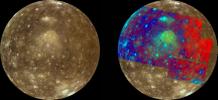
|
-
PIA01298:
-
Global Color Variations on Callisto
Full Resolution:
TIFF
(641.4 kB)
JPEG
(39.18 kB)
|

|
1998-05-08 |
Callisto
|
Galileo
|
Solid-State Imaging
|
930x550x3 |
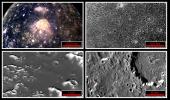
|
-
PIA01297:
-
View of Callisto at Increasing Resolutions
Full Resolution:
TIFF
(891.9 kB)
JPEG
(115 kB)
|

|
1998-05-08 |
Europa
|
Galileo
|
Solid-State Imaging
|
1092x1428x3 |

|
-
PIA01296:
-
Europa "Ice Rafts" in Local and Color Context
Full Resolution:
TIFF
(4.688 MB)
JPEG
(435.7 kB)
|

|
1998-05-08 |
Europa
|
Galileo
|
Solid-State Imaging
|
520x260x3 |
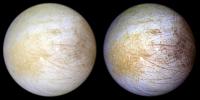
|
-
PIA01295:
-
Europa Global Views in Natural and Enhanced Colors
Full Resolution:
TIFF
(346.7 kB)
JPEG
(20.27 kB)
|

|
1998-05-02 |
Jupiter
|
Hubble Space Telescope
|
WFPC2
|
800x600x3 |
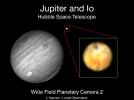
|
-
PIA01267:
-
Hubble Space Telescope Resolves Volcanoes on Io
Full Resolution:
TIFF
(357 kB)
JPEG
(40.59 kB)
|

|
1998-05-02 |
Jupiter
|
Hubble Space Telescope
|
WFPC2
|
600x854x1 |

|
-
PIA01266:
-
Jupiter's Upper Atmospheric Winds Revealed in Ultraviolet Images by Hubble Telescope
Full Resolution:
TIFF
(239.6 kB)
JPEG
(62.37 kB)
|

|
1998-05-02 |
Jupiter
|
Hubble Space Telescope
|
WFPC2
|
800x600x1 |
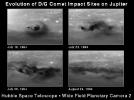
|
-
PIA01265:
-
Month-long Evolution of the D/G Jupiter Impact Sites from Comet P/Shoemaker-Levy 9
Full Resolution:
TIFF
(226.8 kB)
JPEG
(54.55 kB)
|

|
1998-05-02 |
Jupiter
|
Hubble Space Telescope
|
WFPC2
|
830x568x3 |
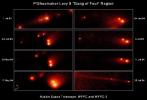
|
-
PIA01264:
-
Evolution of the P/Shoemaker-Levy 9 "Gang of Four" Region
Full Resolution:
TIFF
(543.5 kB)
JPEG
(69.45 kB)
|

|
1998-05-02 |
Jupiter
|
Hubble Space Telescope
|
WFPC2
|
750x700x3 |
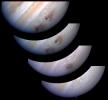
|
-
PIA01263:
-
Jupiter G Impact Evolution
Full Resolution:
TIFF
(752.8 kB)
JPEG
(31.92 kB)
|

|
1998-05-02 |
Jupiter
|
Hubble Space Telescope
|
WFPC2
|
800x800x3 |
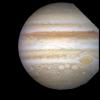
|
-
PIA01262:
-
Hubble Tracks Jupiter Storms
Full Resolution:
TIFF
(1.085 MB)
JPEG
(40.51 kB)
|

|
1998-05-02 |
Jupiter
|
Hubble Space Telescope
|
WFPC2
|
600x700x3 |

|
-
PIA01261:
-
Hubble Gallery of Jupiter's Galilean Satellites
Full Resolution:
TIFF
(527.3 kB)
JPEG
(44.81 kB)
|

|
1998-05-02 |
Jupiter
|
Hubble Space Telescope
|
WFPC2
|
800x600x3 |
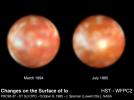
|
-
PIA01260:
-
Hubble Discovers Bright New Spot on Io
Full Resolution:
TIFF
(604.4 kB)
JPEG
(33.67 kB)
|

|
1998-05-02 |
Jupiter
|
Hubble Space Telescope
|
WFPC2
|
850x490x3 |
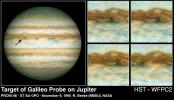
|
-
PIA01259:
-
Hubble Views the Galileo Probe Entry Site on Jupiter
Full Resolution:
TIFF
(993.4 kB)
JPEG
(64.05 kB)
|

|
1998-05-02 |
Jupiter
|
Hubble Space Telescope
|
WFPC2
|
720x600x1 |
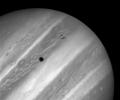
|
-
PIA01258:
-
Rare Hubble Portrait of Io and Jupiter
Full Resolution:
TIFF
(305.8 kB)
JPEG
(28.52 kB)
|

|
1998-05-02 |
Jupiter
|
Hubble Space Telescope
|
WFPC2
|
2069x2489x3 |

|
-
PIA01257:
-
Hubble Images Reveal Jupiter's Auroras
Full Resolution:
TIFF
(6.679 MB)
JPEG
(483.2 kB)
|

|
1998-05-02 |
Jupiter
|
Hubble Space Telescope
|
WFPC2
|
720x900x3 |

|
-
PIA01256:
-
Hubble Captures Volcanic Eruption Plume From Io
Full Resolution:
TIFF
(1.097 MB)
JPEG
(65.49 kB)
|

|
1998-05-02 |
Jupiter
|
Hubble Space Telescope
|
WFPC2
|
1152x860x3 |

|
-
PIA01255:
-
Hubble Provides Infrared View of Jupiter's Moon, Ring, and Clouds
Full Resolution:
TIFF
(645.9 kB)
JPEG
(67.7 kB)
|

|
1998-05-02 |
Jupiter
|
Hubble Space Telescope
|
WFPC2
|
795x900x3 |

|
-
PIA01254:
-
Hubble Provides Complete View of Jupiter's Auroras
Full Resolution:
TIFF
(1.387 MB)
JPEG
(114 kB)
|

|
1998-04-02 |
Jupiter
|
Galileo
|
Photopolarimeter-Radiometer
|
429x585x3 |

|
-
PIA01234:
-
PPR Great Red Spot Temperature Map
Full Resolution:
TIFF
(65.49 kB)
JPEG
(30.68 kB)
|

|
1998-04-02 |
Jupiter
|
Galileo
|
Photopolarimeter-Radiometer
|
468x604x3 |

|
-
PIA01233:
-
Photopolarimeter/Radiometer (PPR) Temperature Map of Great Red Spot
Full Resolution:
TIFF
(340.9 kB)
JPEG
(32.65 kB)
|

|
1998-04-02 |
Ganymede
|
Galileo
|
Photopolarimeter-Radiometer
|
432x540x3 |

|
-
PIA01232:
-
Temperature Map of Ganymede
Full Resolution:
TIFF
(422.9 kB)
JPEG
(29.2 kB)
|

|
1998-03-26 |
Europa
|
Galileo
|
Solid-State Imaging
|
1000x800x1 |
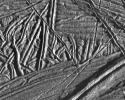
|
-
PIA00849:
-
Ridges and Fractures on Europa
Full Resolution:
TIFF
(830.4 kB)
JPEG
(125.8 kB)
|

|
1998-03-26 |
Io
|
Galileo
|
Near Infrared Mapping Spectrometer
|
1525x1100x1 |
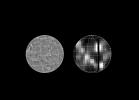
|
-
PIA00835:
-
NIMS Observation of Hotspots on Io
Full Resolution:
TIFF
(178 kB)
JPEG
(74.71 kB)
|

 Planetary Data System
Planetary Data System





















































































































